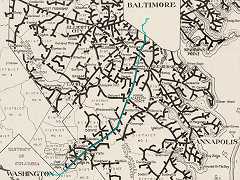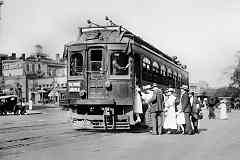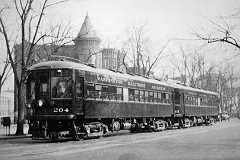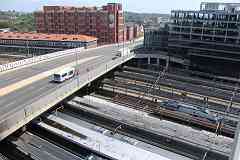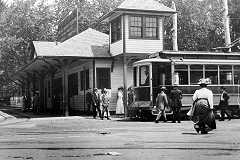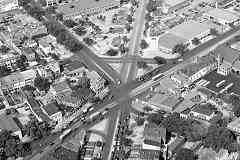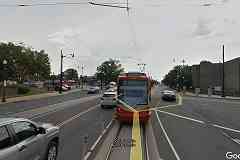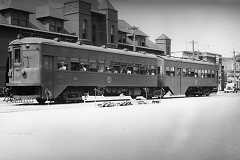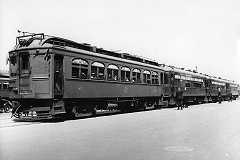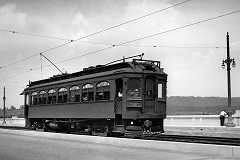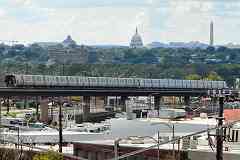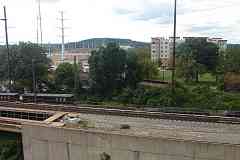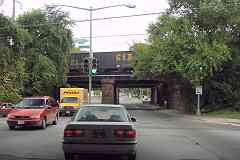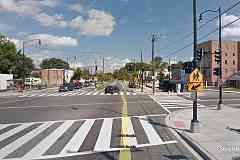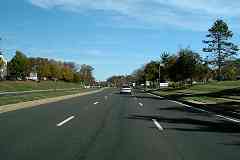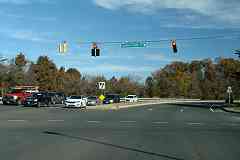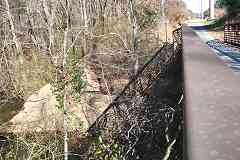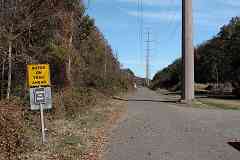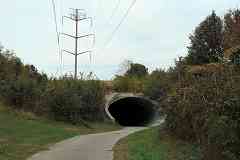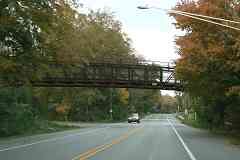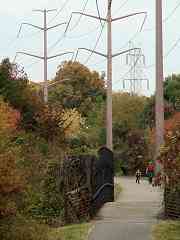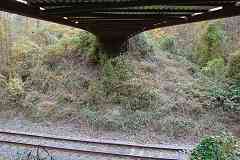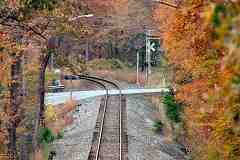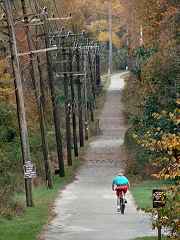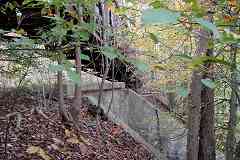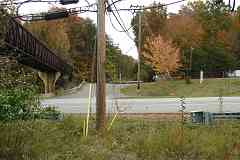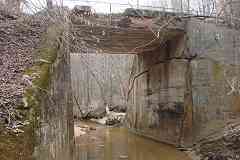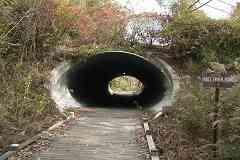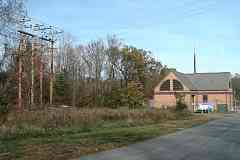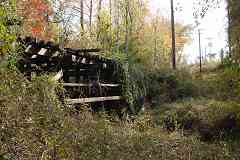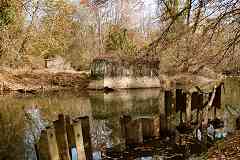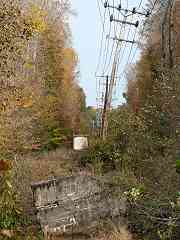|
Growth in DC associated with World War I made the 15th Street location
a busy and passenger-unfriendly one, consequently during 1921 WB&A
opened a terminal a few blocks northeast at New York Avenue between 11th
and 12th Streets, NW. Finally passengers could board trains from a
station designed for that purpose rather than from a busy street.
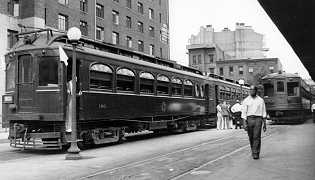

The large text on WB&A car 60 reads:
Most Direct Service
Eastern Shore of Maryland
Via W.B.&A.E.R.R.
Annapolis And Claiborne Ferry
6 Trains Daily From And To
Washington and Baltimore
Operate to Ferry Wharf Annapolis
This terminal would be converted for Greyhound Buses after WB&A
shuttered during 1935. Somewhat similarly, Claiborne Ferry, that
crossed the Chesapeake Bay, was put out of business when the
Chesapeake Bay Bridge opened in 1952. Hotel Annapolis, adjacent
on the north (left, in main photo), was torn down during 1988 to
make room for an office building.
Additional photo credits: left, unknown, circa 1935; right
Howard E. Johnston, August 1932.
Link:
Evans' Auto-Railer 1935
| 